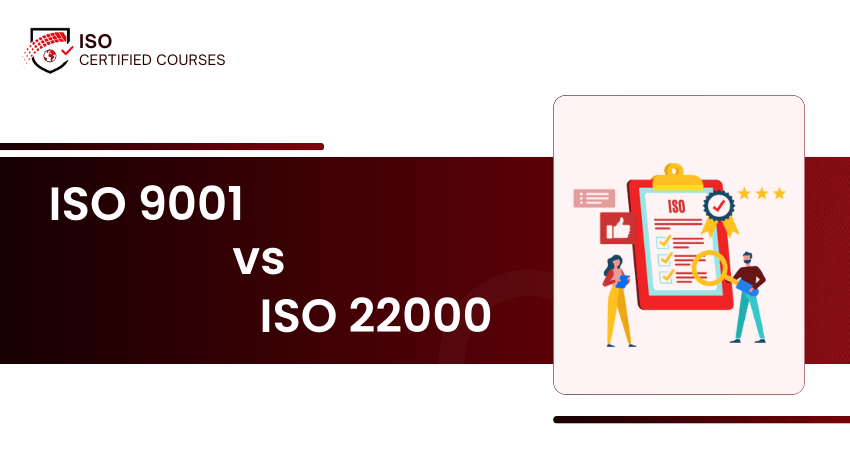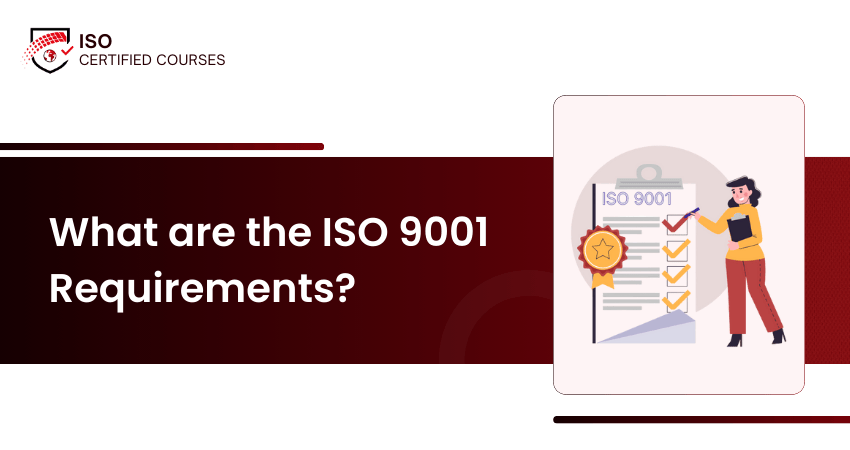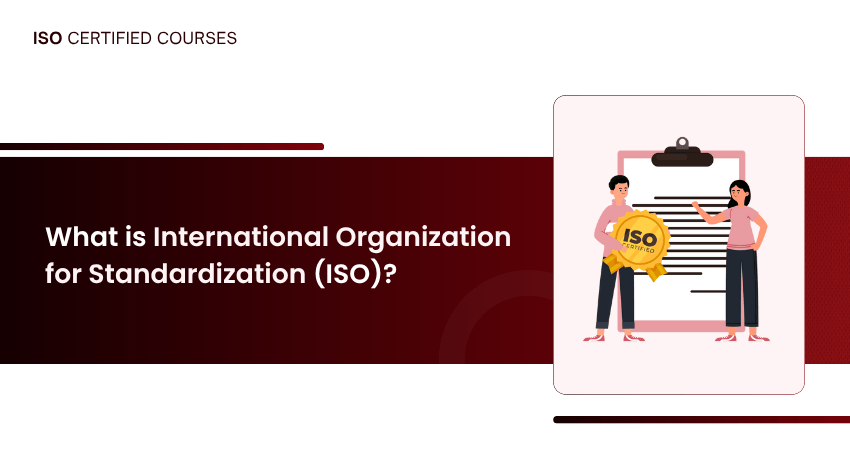
Have you ever wondered how companies across the world deliver quality, safety, and reliability regardless of where their products or services are made? The secret lies in understanding What is ISO and the international standards it develops. From the food on our tables to the gadgets in our hands, International Organization for Standardization (ISO) standards help shape the quality and safety of everything we use.
By following ISO standards, businesses can grow, improve processes, and earn global trust. So, What is ISO? Read ahead to know what exactly it is, its history, types, benefits, and why they matter to every modern organisation. Let’s begin!
Table of Contents
1) What is the ISO (International Organization for Standardization)?
2) History of ISO
3) What are the Different Types of ISO Standards?
4) What are the Benefits of ISO Standards?
5) How are ISO Standards Created?
6) What is the Process for ISO Certification?
7) Who is Responsible for Approving ISO Standards?
8) Conclusion
What is the ISO (International Organization for Standardization)?
The International Organization for Standardization, commonly known as ISO, is a global, non-governmental organisation that develops and publishes international standards. These standards help ensure quality, safety, efficiency, and compatibility across various industries and sectors worldwide.
ISO standards ensure that products and services are safe, reliable, and of good quality across international markets. Each country has a national standards body that participates in the development of ISO standards. Governments and businesses worldwide adopt these standards to meet regulatory requirements and customer expectations.

History of ISO
ISO was officially founded on 23 February 1947. However, the idea of creating international standards goes back even further. In 1926, the International Federation of the National Standardizing Associations (ISA) was formed. It focused primarily on Mechanical and Medical Engineering.
Then, during World War II, the United Nations Standards Coordinating Committee (UNSCC) was created to standardise the efforts of war and its aftermath. Later, in 1946, experts from various countries met in London and decided to create a new international organisation to facilitate global standardisation. As a result, ISA and UNSCC collaborated to establish the ISO, which was founded in 1947.
What are the Different Types of ISO Standards?
ISO has many types of standards. These help businesses in different industries. Let's explore those types of ISO standards:
1) ISO 9001: Quality Management
2) ISO 14001: Environmental Management
3) ISO 27001: Information Security Management
4) ISO 21500: Project Management
5) ISO 45001: Occupational Health and Safety Management Systems
6) ISO/IEC 20000: IT Service Management
7) ISO 22000: Food Safety Management
8) ISO 50001: Energy Management
9) ISO 31000: Risk Management
10) ISO 28000: Supply Chain Security Management
11) ISO/IEC 27701: Privacy Information Management
12) ISO 13485: Medical Devices Quality Management
13) ISO/IEC 17025: Testing and Calibration Laboratories
These standards are accepted globally and share a common language and structure. They help people trust products and services, no matter where they come from.
What are the Benefits of ISO Standards?
ISO standards have many benefits for companies and customers. Here are some of its key benefits:

1) Streamline Operations and Lower Costs
1) Helps companies work in a more organised way
2) Improves consistency and predictability in daily operations
3) Enhances Resource Management across departments
4) Reduces waste, rework, and delays
5) Lowers operational costs with planning and control
2) Comply with Regulatory and Legal Obligations
1) Provides a structured framework to meet industry laws and regulations
2) Minimises the risk of legal penalties and non-compliance
3) Enhances public and stakeholder trust through clear standards
4) Makes it easier to pass checks and audits
5) Shows that your business values safety and quality
3) Strengthen Risk Management Practices
1) Gives a systematic approach to deal with risks in a proactive and structured way
2) Helps find possible problems in their early stages
3) Lowers the risk of project delays, safety issues, and data breaches
4) Enhances your business to run smoothly even in difficult times
5) Encourages employees to take responsibility and be alert
Expertise in risk assessment with our ISO 22301 Training – Start your journey today!
4) Encourage Ongoing Improvement
1) Encourages regular process reviews and performance checks
2) Aligns operations with current industry best practices
3) Boosts innovation with timely feedback and performance reviews
4) Supports employee engagement and a mindset of growth
5) Helps the organisation stay competitive in growing markets
5) Attract New Business Opportunities
1) Shows your business meets international quality and safety standards
2) Builds trust with new clients, suppliers, and partners
3) Increases your brand visibility and raises your reputation
4) Helps to obtain government or large corporate contracts
5) Enhances your brand image and marketing appeal
6) Enable Fair Competition and Trade
1) Supports smoother cross-border transactions and approvals
2) Shows that a business is professional and reliable
3) Allows small and big companies to compete fairly in global markets
4) Improves chances of joining global supply chains
5) Opens access to global markets and tender opportunities
Acquire the elements and operations of an Asset Management System with our ISO 55001 Foundation Training – Register now!
How are ISO Standards Created?
The ISO Standards are a structured process, and their development involves the following steps:
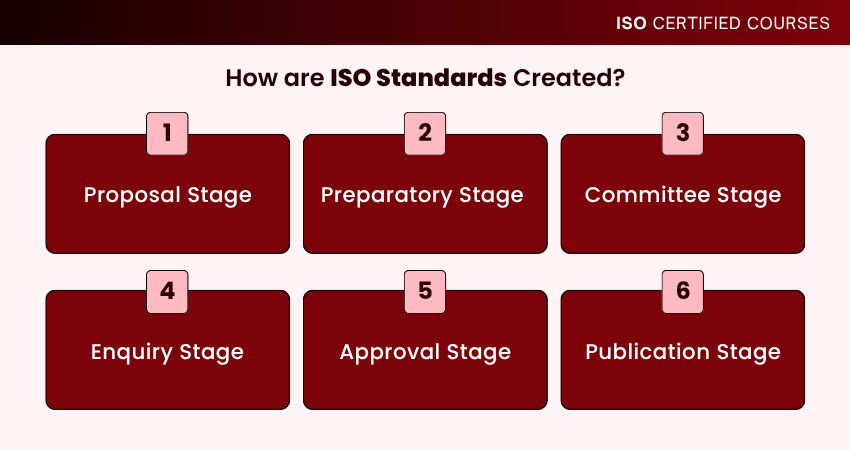
1) Proposal Stage
This stage is also called the preliminary stage. In this, a new standardisation requirement is identified by industry experts, national bodies, or consumer groups. So, a proposal is submitted to ISO.
2) Preparatory Stage
In this stage, a group of experts prepares the first draft of the standard, known as the Working Draft (WD). These experts come from various sectors, countries, and often include stakeholder representatives.
3) Committee Stage
In this stage, the draft is reviewed and commented on by a larger committee like national representatives. They will give feedback upon their review, and revisions will be made accordingly.
4) Enquiry Stage
In the enquiry stage, the draft standard that has been reviewed and revised will be sent to ISO members for voting. In this procedure, the draft will be referred to as the Draft International Standard (DIS). Here, the members will vote for approval of the proposed standard.
5) Approval Stage
After voting for the preferred standard, technical revisions will be made. Once those revisions are completed, the Final Draft International Standard (FDIS) is circulated for final vote and approval. ISO members need to approve it to be the final standard.
6) Publication Stage
The last stage in ISO standard creation is the publication stage. Once the standard gets approved, it will go up for publication and be made available for adoption by organisations worldwide.
This entire process of ISO standard creation ensures that ISO standards are balanced, technically sound, and broadly accepted across borders.
Learn the basics of Information Security Management Systems with our ISO 27001 Training – Start your career path here!
What is the Process for ISO Certification?
Before planning to get ISO Certification, you need to think twice about whether it is truly needed. This is because getting ISO certified might take some time and effort. The process of ISO Certification may vary based on the ISO standard and the certification body. However, here are the general steps to follow:
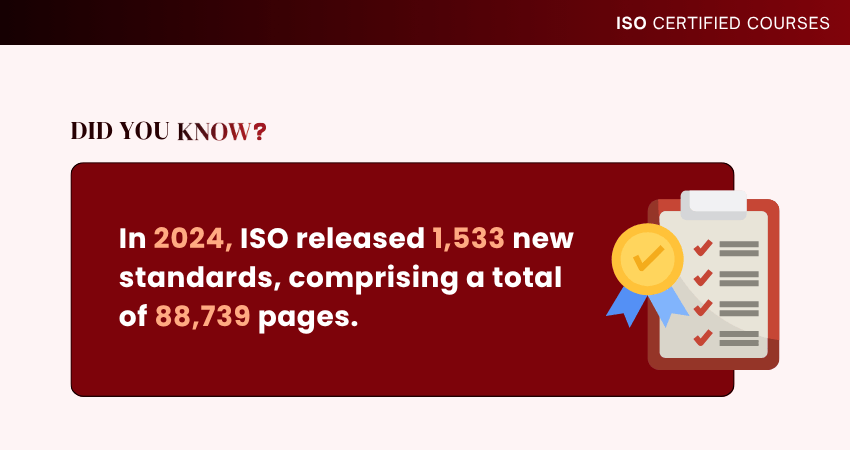
1) Understand the ISO Standard: You need to know what your ISO standard requires. You can review the clauses, terms, and goals of the ISO standard your organisation wants to follow.
2) Identify the Trouble Areas: Now, you need to compare your current processes with the ISO requirements. It allows you to check for areas where your operations do not meet the standards. These are the things you need to identify and change.
3) Document Processes and Make Improvements: In order to get the certificate, you need to create, update, and make necessary improvements to your internal documents. It includes procedures, policies, plans, and manuals to match the ISO standard.
4) Implement the ISO Standard: In this step, you need to implement or improve ISO standard processes into daily practice across the organisation. You need to ensure employees understand and follow procedures consistently.
5) Conduct an Internal Audit: It is better to undergo an internal audit before the official audit. It helps you to check if your system meets ISO requirements. This also finds and fixes any last-minute issues.
6) Choose a Certification Body: Once the internal audit is done, you are prepared for the certification. You can select an accredited ISO Certification body to perform your official audit.
7) Undergo the Certification Audit: The certificate body will perform the final audit by reviewing your documents. They also visit your workplace to check if your processes follow what is written and meet ISO standards.
8) Receive ISO Certification: If your final audit becomes successful, you will receive an ISO Certification.
Who is Responsible for Approving ISO Standards?
ISO standards are approved through a consensus-based approach. The consensus is a committee composed of industry experts, national standard bodies, and international stakeholders relevant to the proposed ISO standard.
For example, ISO 14001 for Environmental Management Systems involves reviews from Environmental Scientists, sustainability consultants, industry leaders, government agencies, and regulatory bodies from various countries. They review the draft, provide feedback, and vote through multiple stages before the final standard is published.
Conclusion
ISO standards help make sure things are safe, reliable, and of high quality. Being aware of What is ISO helps businesses grow faster, work better, and build more trust with their customers. Therefore, getting ISO certified is not just a label. It is a smart step towards your long-term success. Whether you are a small business or a large company, following ISO can help you improve every part of your work.
Enrich your operational efficiency and compliance with our ISO 17020 Training – Sign up immediately!
Search Smarter
Quickly search through our blog content for what interests you
No match found


































